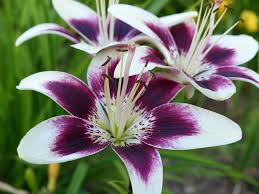Balloon Flowers (Platycodon grandiflorus): All You Need to Know About
Balloon flowers (Platycodon grandiflorus) usually start as hollow buds and, as it grows, eventually bursts open into a star-shaped flower. In addition to its beauty, Balloon flowers are resilient in the garden and can handle varying sunlight, water and soil.
Its sun requirement can either be a Full Sun or a Partial Shade sun.
It requires a Well-drained soil with Zones: 4 – 9 and a Height of about 2.5 – 3.5 feet.
It blooms in summer and it is Deer resistant.
Balloon flower (Platycodon grandiflorus) is one of those fun plants to grow in the garden with kids. Balloon flowers get their name from the unopened buds, which swell up prior to opening and resemble little hot-air balloons.
Kids are fascinated by these plants and will typically pop them for sport by squeezing the sides, making them burst open with a soft, popping sound. Growing balloon flowers with children can be quite fun.
The opened flowers resemble those of bellflowers, their kissing cousin. While most often deep blue or purple, white and pink varieties are also available. And depending where you are, the balloon flower may also be known as Chinese or Japanese bellflower.
Growing Balloon Flowers The balloon plant is easy to grow and hardy in USDA Zones 3-8. It will thrive in sun or partial shade. It likes well-drained, slightly acidic soil; and although the balloon flower plant will tolerate dry conditions, it prefers (and needs) plenty of moisture.
This cold hardy plant also prefers cooler conditions in summer, so afternoon shade is a good idea for warmer regions. Seeds can be directly sown in the garden or started indoors in early spring.
It is not necessary to cover seeds; simply moisten the area and within a couple weeks you should have sprouts. Thin these to about a foot apart. Generally, balloon flowers bloom within the same season they are sown.
Read Also: Allium Flowers (Ornamental Onion) – All you need to know
Caring Guide for Balloon Flowers
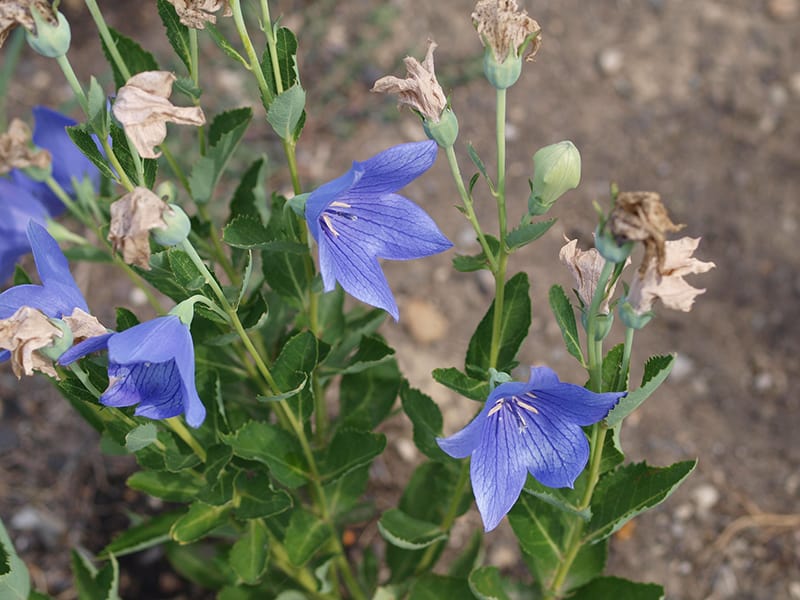
Not only are they easy to grow, but these plants are easy to care for as well. If desired, they can be fertilized with a slow-release fertilizer in spring.
From there, you simply water as needed. With exception to occasional bouts of slugs or snails, balloon flower pests are few.
Basically, all you’ll need to do for these plants is sit back and enjoy these long-blooming plants throughout summer. Of course, they may require staking if falling over.
You can also add them to cut flower arrangements. Since the succulent stems have milky sap, you’ll need to lightly singe the cut ends with a candle (or match) immediately after cutting to make them last longer.
In fall you can add an ample layer of mulch for winter protection. Balloon flower plants don’t really like being disturbed; and although division can be done, it’s often difficult.
Therefore, propagation by seed is better or cuttings can be taken in spring, if desired.
Balloon Flowers Overview
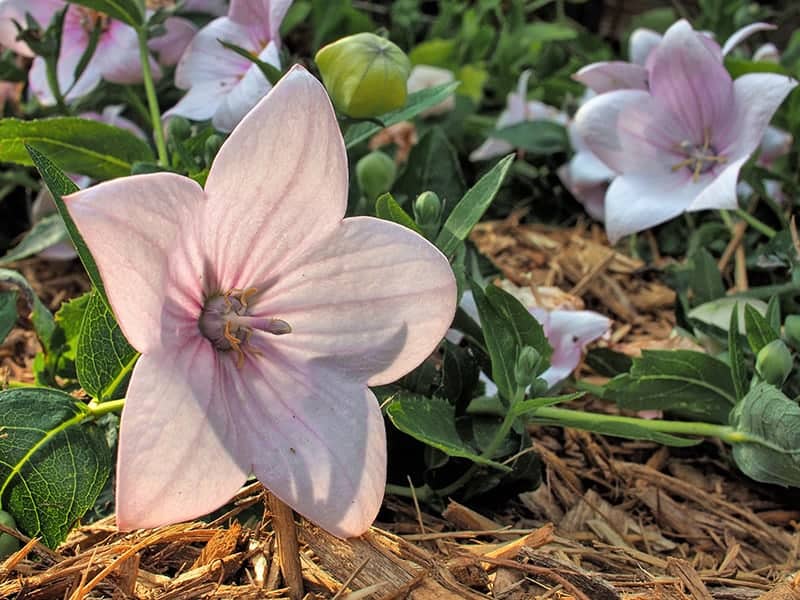
| Origin | Korea, China, Japan, Russia |
| Scientific Name | Platycodon grandiflorus |
| Family | Campanulaceae |
| Type | Clump-forming herbaceous perennial |
| Common Names | Balloon Flower, Chinese Bellflower, Japanese Bellflower |
| Height | Around 2 feet |
| Toxicity | Some toxic elements |
| Light | Full sun to partial shade |
| Watering | Moderately moist soil |
| Pests | Slugs and snails |
Varieties of Balloon Flowers
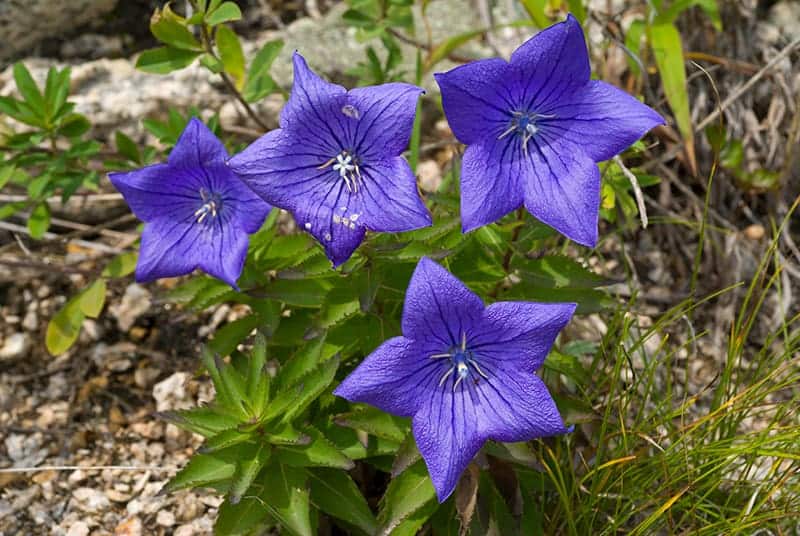
The balloon flower has become incredibly popular in American gardens due to its impressive hardiness, low maintenance needs, and the surprising flowers it produces.
There are a whole host of varieties to choose from if you are looking to invest in some balloon flowers, with all of them having plenty to offer the keen gardener.
Sentimental Blue
This dwarf variety grows to a maximum of just 8 inches tall, making it perfect for growing in container pots on the patio or as bedding, edging, or a border plant.
Its small stature means that unlike many balloon flowers, it won’t need to be staked, yet still produces large, vibrant blue star-shaped flowers of up to three inches in diameter.
The stems of this plant emerge from the ground each spring but can be easily disturbed if you forget where they were planted.
Read Also: Angelica Flowers – All you need to know
It’s a good idea to mark them out so that you can leave a clear space for them to arrive each year, as even minor disturbance of this plant can cause it to die.
It does not cope well with being moved, and as it is a smaller variety, it would be best grown directly in the container, which will also be its final home.
Astra Pink
These balloon flowers are another dwarf variety that grows up to 8 inches in height. They work well in containers and also as cut flowers in bouquets.
The buds of this variety appear as puffed up white balloons, which transform into star-shaped flared flowers. The flowers are white with subtle striping hints of pink.
Fuji Blue
Fuji Blue is a medium variety of balloon flowers. It grows to around 20 inches tall, making it an impressive height but still small enough to not require the stems to be staked.
The flowers of this variety are slightly smaller than other balloon flowers, typically measuring two inches across, and appearing in a vibrant shade of blue with some darker blue veining.
Double Blue
This variety of balloon flower features double blooms, with two full layers of star-shaped blue petals. The plant grows to around 24 inches in height and is a variety that may need to be staked when mature.
The plant is deer-resistant, mostly disease-resistant, and is not frequently a victim of insect infestations.
However, slugs and snails need to be watched out for as these can sometimes cause a problem for the plant.
Read Also: Anemone Flowers: All you need to know
Caring for Your Balloon Flower
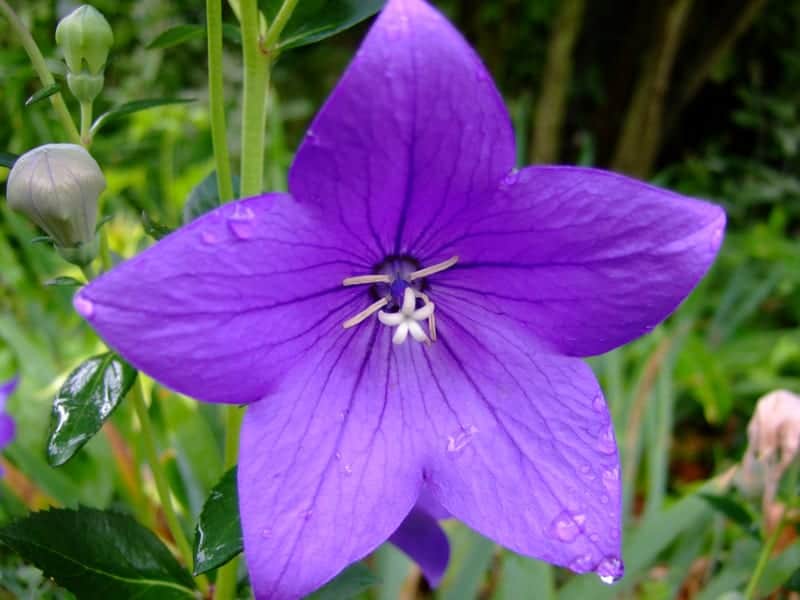
1. Watering
This plant should be grown in well-draining loamy soil because it enjoys a good amount of moisture but does not like to be sitting in soggy soil.
A high-quality, well-draining soil with good organic content will encourage water to drain away from the roots, protecting the plant against root rot while ensuring it gets all of the moisture and nutrients it needs.
The plant would prefer to be in slightly acidic soil, ranging between 6 and 7 pH, though it will tolerate alkaline or neutral soil as well. Avoid heavy or waterlogged areas when planting the balloon flower as it will struggle to survive in these conditions.
2. Light
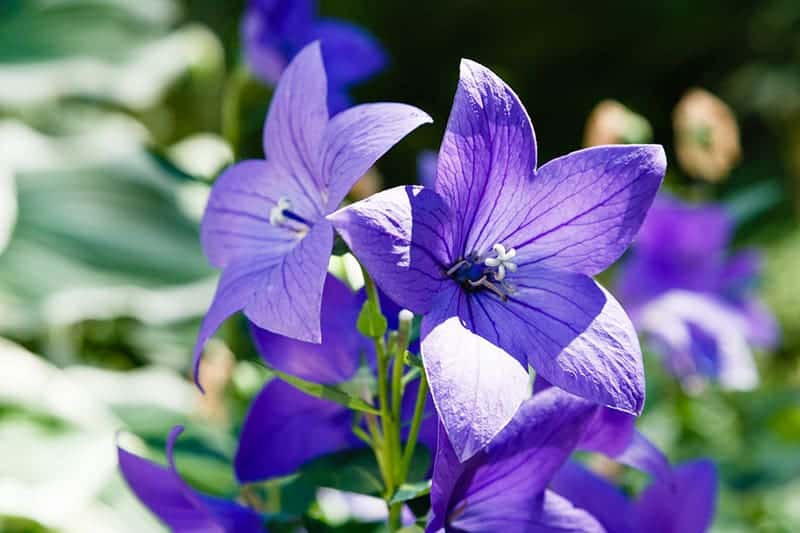
Full sun is best for this plant, especially if you want it to produce an abundance of flowers. If you aren’t able to offer the plant a full sun position, then it will settle for partial shade, ideally with several hours of direct sun in the morning.
3. Temperature
This plant is hardy in zones 3 to 8, and it will thrive in temperatures ranging from 60 to 80 ºF. It can tolerate temperatures exceeding 8 0ºF but will need some protection during the hottest part of the day.
If you live in a hot climate, you should position this plant so that it receives morning sun but is sheltered in the afternoon from the intense heat. The afternoon shade will drop the temperature a few degrees and give the plant some relief from the high levels of heat.
4. Propagation
Balloon flowers grow well from seed and can be sown anytime within the growing season. If you want to get a head start on growing these plants, you can sow the seeds indoors in early spring.
Use a tray of moist, well-draining soil and sit the seeds on top, lightly pressing them into the soil. Be careful not to cover the seeds over with soil or press them in too deep, as they need light in order to germinate.
Keep the soil moist but not soggy and sit them in a bright and warm spot.
Germination should occur within two weeks. Once seedlings have developed, you can thin them out, moving the strongest among them to slightly larger pots to allow their roots to spread and gain strength.
Once the final frost has passed, you can transplant the seedlings outside to their final positions. You will need to take care as balloon flowers have particularly delicate root systems, which, although fleshy, can be very easily damaged.
Do not expect all of your seedlings to survive the move, so grow more than you need initially. Alternatively, you can sow seeds directly in the ground during late spring or summer.
This will likely result in a higher success rate as the plants won’t need to be transplanted, but they will have less time to grow during the growing season, so it won’t become as large as when started earlier. Balloon flowers typically won’t flower in their first year.
This plant is also fairly successful in self-seeding, so you can benefit from extra balloon flowers for no effort at all. Spent flowers develop into seeds, some of which will be dispersed and settle into the soil where they will grow into new plants.
To allow this to happen, you need to refrain from deadheading the flowers as this is where the seeds are. Allow them to naturally drop to the ground when they are ready, and you should see a handful of new balloon flowers emerging next spring.
Read Also: Winter Aconite Flowers (Eranthis hyemalis): All you need to know
5. Flowers

The blooms of this plant are commonly known as balloon flowers because of the way the buds swell up like balloons, and then seemingly burst into starry bell-shaped flowers.
Each flower has five points and measures between two and three inches across. The flowers are reliable bloomers and are available in white and various shades of blue and violet.
They bloom profusely throughout the summer, sitting on top of tall stems in clusters of flowers, with serrated foliage below.
In the winter, the foliage itself can provide some colorful interest in the garden, with the leaves often fading to shades of purple and red.
Some stems may need to be staked to prevent them from falling over when flowering, as stems tend not to be very strong and become more likely to bend over the taller they get.
If you are opposed to staking plants, an alternative method would be to clump plants together so that they can support each other.
Another option is to prune back stems after the flower, as this will encourage a bushier pattern the following season and prevent stems from becoming so tall.
The scientific name actually translates to broad bell, which is a good description of the flower. Platycodon is derived from Greek, with platys meaning broad, and kodon meaning ‘bell. Grandiflorus literally translates to large flowers.
6. Pruning
This is a low-maintenance plant that doesn’t necessarily require pruning. However, you can prune it if you wish to train it to grow in a particular way.
To keep the plant from getting leggy, you can trim the stems back by just a few inches, though be sure to do this after flowering has occurred to prevent inadvertently disturbing the flower production.
Pinching back stems will result in more growth at the base and a bushier looking plant. It will also help to prevent the flowering stems from becoming so tall that they need staking.
Other than this, the maintenance of this plant is very minimal. You can deadhead the spent flowers if you wish, as this will encourage more flowers to bloom and result in a longer flowering season.
7. Toxicity
Some parts of this plant are toxic, namely the roots and the basal leaves. However, some other parts of the plant are edible and can be used in soups or for flavoring.
Read Also: Angelica Flowers – All you need to know
Common Problems
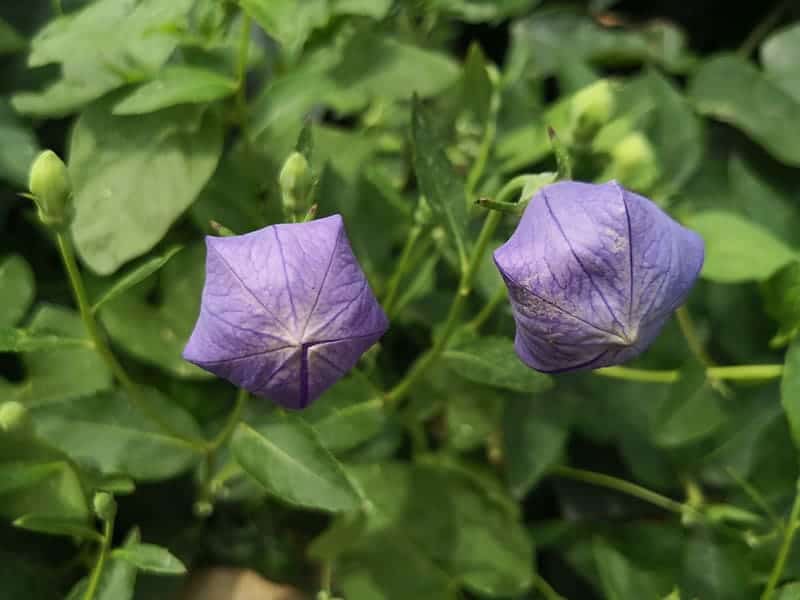
Balloon flowers are mostly disease-free. They are also deer-resistant and pest-resistant, very rarely being affected with insect infestations. The exception to this is slugs and snails, which can sometimes cause problems for the plant.
Snails and slugs feast on the foliage of plants, leaving unsightly holes in your plant’s leaves and negatively affecting their health. There are ways you can naturally deter these pests from inhabiting your balloon flowers, such as planting garlic or chives nearby, which are slug and snail repellents.
Are you ready to get festive by growing your own balloon flowers? Let us know if you have any questions by leaving us a comment, and don’t forget to share this page with other interested growers!
Read Also: Reducing your Environmental Impact



